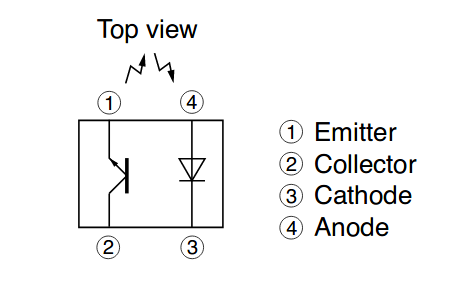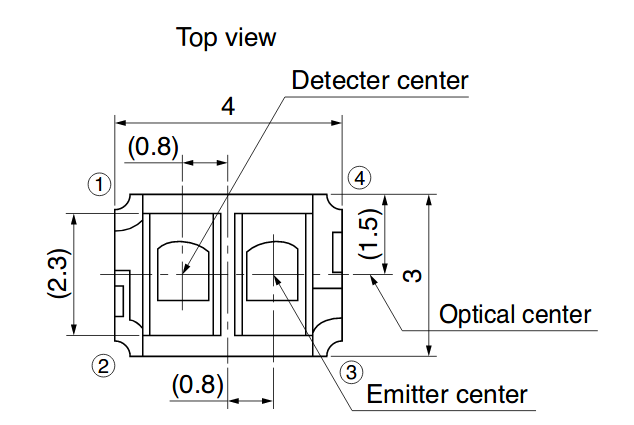Detect Reflective Surfaces with a GP2S700HCP from Sharp Corporation
Finding out whether things are nearby is a classic engineering problem – OEMSecrets already introduced you to a wide range of possibilities. Now, Sharp sends a classic optoreflective system into the fray.
From a technical point of view, the part is quite simple. It combines a IR diode and a phototransistor in a single housing. In addition to that, a raisin cover is placed above the assembly to minimize the impact caused by ambient visible light.
The internal schematic of the GP2S700HCP could not be easier

The actual range of the sensor is quite difficult to ascertain – the datasheet limits itself to stating “Optimal Sensing Distance : 3mm”, but also mentions that the part has an extraordinarily large range for this product class.
This is also reflected in the opto-electrical properties. The forward voltage of the infrared diode is said to be between 1.2 and 1.4 Volts when a current of 20mA flows. Absolute maximum current is in the range of 50mA, which – obviously – also leads to a higher detection range.
Physical placement, on the other hand, is simple. Our figure shows the two “eyes” of the part next to one another, with surface mount soldering points at the bottom providing electrical access to required signals.
